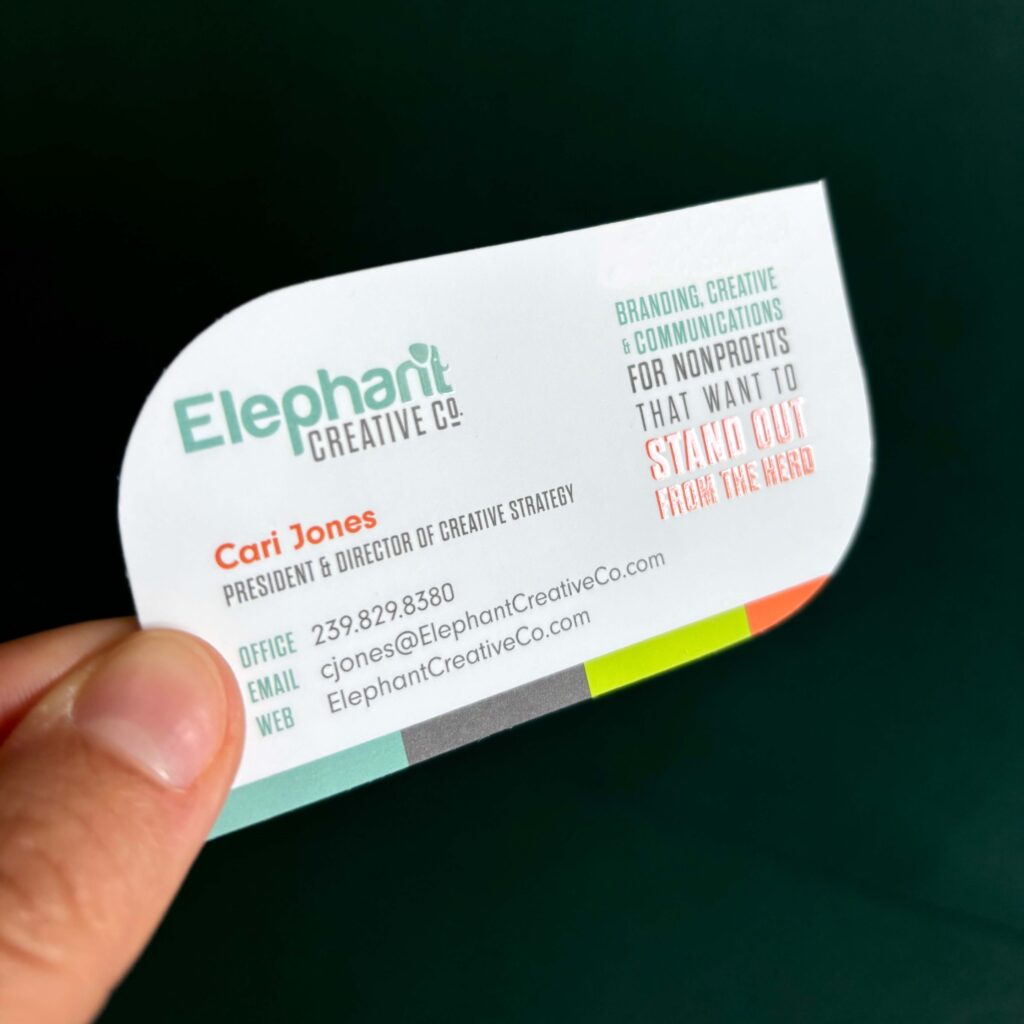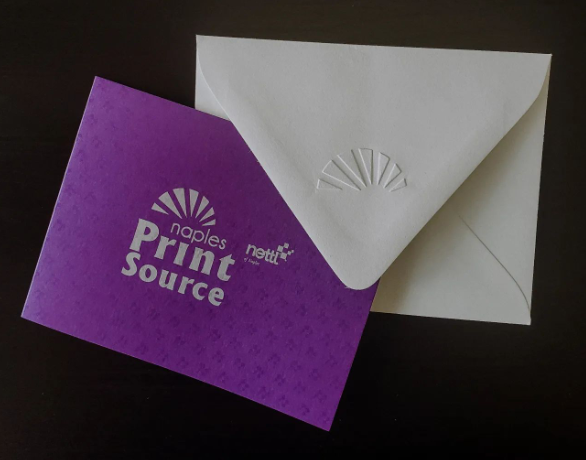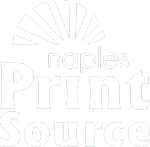by Naples Print Source | Jun 27, 2024 | Marketing, Nonprofit, Printing Techniques:
Spot varnish is one of the most difficult printing processes to explain without showing examples. As we like to do in our articles, examples are provided below to demonstrate the value and advantages of the technique.
The spot varnish process literally involves applying a clear fluid or film to specific parts of the artwork. It is most commonly used to emphasize certain text, draw attention to a specific portion of the graphics, or simply to grab attention. The spot varnish—also called selective varnish—creates depth, dimension and contrast in your print project, whether an invitation, presentation folder or business card.
In this example, spot varnish is used on the save the date card to reinforce some of the important golf-related graphics including the curves in the golf course, the area around the pin and the flag marking the hole:

Spot varnish can also be used to reinforce a tag line. In this business card example, spot varnish is used over the text, “Stand Out From The Herd” … which literally makes it “stand out!”

In this example, here, the red solid design element on the brochure cover is highlighted with spot varnish to catch the recipient’s attention.
Spot vanish can also be used to reinforce branding in areas where there is no printing at all. In this example, you can see a tiny version of the logo repeated multiple times using spot varnish against the purple background of this note card:

An alternative to spot varnish, foil can also be used to highlight portions of artwork. However, it has several limitations you should be aware of.
- Foil is only available in limited colors and cannot be matched to specific Pantone colors. In contrast, spot varnish allows you to maintain the integrity of Pantone colors.
- Foil pricing is generally limited to a single color of foil. Adding a second foil color will almost always increase the cost of the project. As an alternative, spot varnish can be added to various colors and portions of artwork without increasing costs. In other words, if you want various colors to be highlighted in your art, spot varnish is probably a better solution.
In a previously published article, we discussed raised spot varnish, which is different from traditional (flat) spot varnish. As a refresher, raised spot varnish is also a clear varnish that is applied to your printing project in specific areas but after the varnish is applied during the printing process, it is cured using a UV light. This not only adds a shine when it catches the light but also creates a raised texture, drawing attention to a particular part of your design. It is a creative way to add depth and contrast with different levels of sheen and texture. And because raised spot varnish is clear, it can be applied anywhere on the printed piece without impacting the readability of any text underneath it.
Traditional spot varnish is almost always less expensive than raised spot varnish.
As you plan your marketing projects for the next few months, consider the many tools and techniques available for your printed pieces that will turn heads and demand attention. Call on our team to assist you in exploring each option so you can make the best decision possible.
Schedule a Consultation or Contact Us today!
